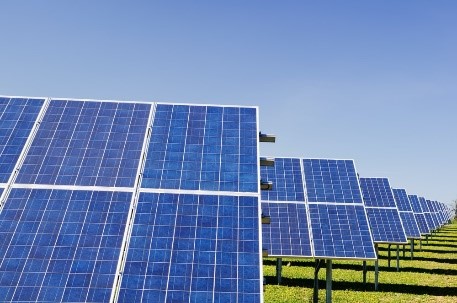Energy Transfer
Grade 6 Science Worksheets
What are Potential and Kinetic Energy?
You have read about the various forms of energy before. (See Kinetic and Potential Energy). Let us recap what they
are –
All matter has energy. Two of the most basic kinds of energy are Potential and Kinetic energy.
Schedule a Free session to clear worksheet doubts
No credit card required, no obligation to purchase.
Just schedule a FREE Sessions to meet a tutor and get help on any topic you want!

Potential Energy is stored energy. It represents work that has already been done. A rock that has been carried to the top of a cliff possesses potential energy. A pendulum bob that has been pulled to one end possesses potential energy. The water stored behind a dam possesses potential energy. All these forms of matter – the rock, the pendulum bob, the stored water, are at the State of Rest in their respective positions but they all have the Potential (or capability) to do work in that state. The stationary rock has the potential to fall off the cliff, the pendulum ball has the potential to swing back and forth and the stored water has the potential to flow to a lower position.
Kinetic Energy is the Energy of Movement. In the above examples, the falling rock, swinging pendulum and flowing water are all forms of kinetic energy. So also, a bullet fired from a gun, a moving train, a high-speed electron hitting the television screen, and so on.

Personalized Online Tutoring from eTutorWorld
eTutorWorld offers affordable one-on-one live tutoring over the web for Grades K-12, Test Prep help for Standardized tests like SCAT, CogAT, MAP, SSAT, SAT, ACT, ISEE and AP. You may schedule online tutoring lessons at your personal scheduled times, all with a Money-Back Guarantee. The first one-on-one online tutoring lesson is always FREE, no purchase obligation, no credit card required.
For answers/solutions to any question or to learn concepts, take a FREE TRIAL Session.
No credit card required, no obligation to purchase.
Just schedule a FREE Sessions to meet a tutor and get help on any topic you want!
There are many forms of energy which we see or use in our daily lives –
- Thermal energy in the form of heated particles of objects
- Radiation energy which we get from the sun
- Chemical energy from fuels used to run our cars and machines
- Electrical energy which powers our batteries and lights our homes
- Atomic energy which comes from splitting atoms, used in nuclear power plants
- Sound energy made by vibrating objects such as whistles, horns, and musical instruments
- The mechanical energy produced by objects in motion such as bicycles, pulleys, and exercising
- Elastic energy in a compressed spring or stretched rubber-band
What is Energy Transfer?
In addition to the transformation of energy from one form to another, energy can also be transferred from one form of matter to another.
Let us see some more examples –
- Water flowing down from a damtransforms potential energy into kinetic energy. When this water hits a turbine, its kinetic energy is transferred into mechanical energy of the rotating turbine wheel. The rotation of the turbine wheel helps create electrical energy.
- A pebble released from a catapult transfers potential energy from the pulled catapult to kinetic energy of the pebble. When the pebble strikes a target, this kinetic energy is transferred to the target in the form of sound and heat energy.
- Stored chemical energy in batteries is transferred to light energy in the filament of a flashlight
- A pulley used to lift an object transfersmechanical energy of the pulley into potential energy of the object
- Solar panels transfer light or solar energy to electrical energy to power our homes
- Chemical energy in gasoline is transferred to mechanical energy of wheels to run automobiles
- Chemical energy in gunpowder is transferred into kinetic energy of the moving bullet

Tyre marks are an indication of the friction
What is Energy Loss?
A rolling ball possesses kinetic energy. The ball eventually stops due to rubbing action between the ball and the surface. This rubbing is called Friction, which transfers the kinetic energy to thermal energy, which heats the ball, the surface, and the air through which it is moving. If it weren’t for friction, a rolling ball would have rolled forever.
We see the rolling ball lose energy and come to a stop, so we think of this as a loss of energy. But actually this “heat loss” is not a loss of energy, it is just an example of the transformation and transfer of energy from one form to another.
Similarly, when chemical energy is transformed into mechanical energy to operate an engine, some energy is lost in the form of engine vibration, (useless kinetic energy), sound, and heat, all of which are forms of energy transformation and transfer.
The Law of Conservation of Energy
Although energy is transformed from one form of energy to another form of energy, and energy is transferred from one form of matter to another form of matter, however, energy is never created nor destroyed during any of these processes. This is known as the Law of Conservation of Energy.
The law states that the energy in any system can neither be created nor destroyed. Instead, energy is either transformed from one form to another or it is transferred from one system to another. The total energy remains the same before and after an energy transformation or transfer.

Check Point
- Stored energy is called ______ energy, while energy involved with movement is called ______ energy.
- Which of these are forms of energy –
- Mechanical
- Sound
- Chemical
- Thermal
- All of the above
- ______ energy in gunpowder is transferred to kinetic energy of the ______.
- Heat loss is just an example of the ______ and ______ of energy.
- The law of conservation of energy states that energy can neither be ______ nor ______.
Answer Key
- Potential, Kinetic
- e) All of the above
- Chemical, Bullet
- Transformation, Transfer
- Created, Destroyed
Schedule a Free session to clear worksheet doubts
No credit card required, no obligation to purchase.
Just schedule a FREE Sessions to meet a tutor and get help on any topic you want!
Learn more about Scientific Method and other important topics with 7th Grade Science Tutoring at eTutorWorld. Our expert science tutors break down the topics through interactive one-to-one sessions. We also offer the advantage of customized lesson plans, flexible schedules and convenience of learning from home.
Pricing for Online Tutoring
| Tutoring Package | Validity | Grade (1-12), College |
|---|---|---|
| 5 sessions | 1 Month | $124 |
| 1 session | 1 Month | $25 |
| 10 sessions | 3 months | $239 |
| 15 sessions | 3 months | $354 |
| 20 sessions | 4 months | $449 |
| 50 sessions | 6 months | $1049 |
| 100 sessions | 12 months | $2049 |
Images Credit:
https://live.staticflickr.com/4039/4318471991_6410a8e40d_b.jpg
https://images.unsplash.com/photo-1521618755572-156ae0cdd74d?ixlib=rb-1.2.1&ixid=eyJhcHBfaWQiOjEyMDd9&auto=format&fit=crop&w=1956&q=80
https://images.unsplash.com/photo-1521853056524-aca372bffae7?ixlib=rb-1.2.1&ixid=eyJhcHBfaWQiOjEyMDd9&auto=format&fit=crop&w=1950&q=80


